Fast-learning Robots: 10 Breakthrough Technologies 2025
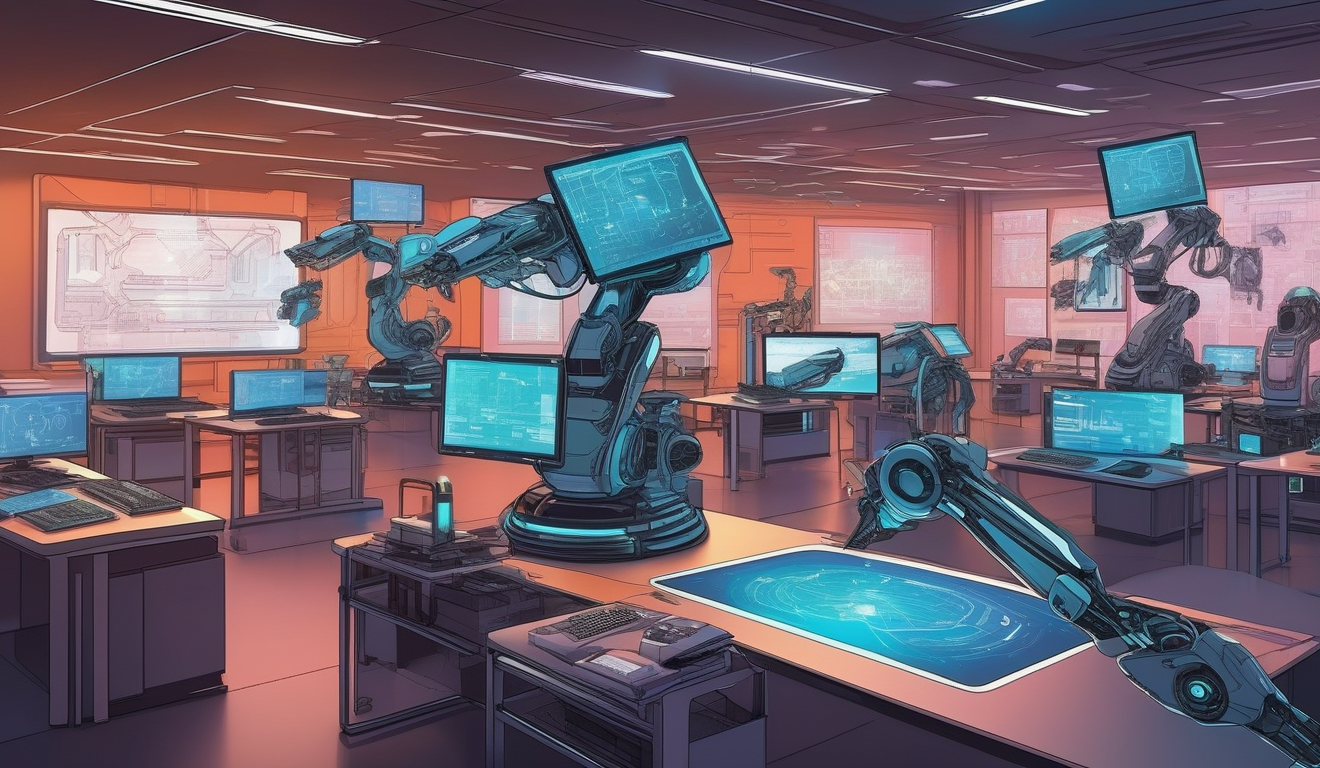
The future of robotics is not just about machines doing tasks; it’s about fast-learning robots that can adapt, evolve, and enhance their capabilities in real-time. By 2025, we anticipate a wave of groundbreaking technologies that will redefine how robots interact with the world and with us. Imagine a robot that learns from its environment just like a child learns from its experiences. This evolution is driven by a combination of advanced algorithms, smarter sensors, and human-like communication abilities. It’s not science fiction; it’s the future unfolding before our eyes.
As we delve into the world of fast-learning robots, we can expect to see significant advancements across various industries. From healthcare to manufacturing, the potential applications are vast and exciting. These robots will not only perform tasks but will also understand context, make decisions, and even predict outcomes based on their learning. Picture a scenario where robots in hospitals can learn from patient interactions to provide better care or robots in factories that optimize production lines by learning from each cycle. The implications are staggering!
Moreover, with the integration of collaborative robotics, we will witness a new era of human-robot partnerships. These robots will be designed to work alongside us, enhancing productivity while ensuring safety. They will learn from our actions and adapt to our needs, making them invaluable assets in any workplace. This synergy between humans and robots will foster a more efficient and innovative environment, pushing the boundaries of what we can achieve together.
In addition to collaboration, advancements in natural language processing will allow robots to understand and respond to human commands more intuitively. Imagine chatting with your home assistant, and it not only understands your requests but also learns your preferences over time. This level of interaction will revolutionize user experiences across various applications, from personal assistants to customer service robots.
Let’s not forget about energy efficiency. As the demand for sustainable solutions grows, the push for energy-efficient robotics will be paramount. By developing technologies that minimize power consumption, we can extend the operational time of these robots while reducing their environmental footprint. This aspect is crucial in ensuring that our technological advancements align with global sustainability goals.
In conclusion, the landscape of fast-learning robots is set for a dramatic transformation by 2025. With the convergence of machine learning, advanced sensors, and human-like interaction capabilities, we are on the brink of a new era in robotics. The question is, are we ready to embrace these changes? As we explore these technologies, let’s keep our minds open to the possibilities they present for our future.
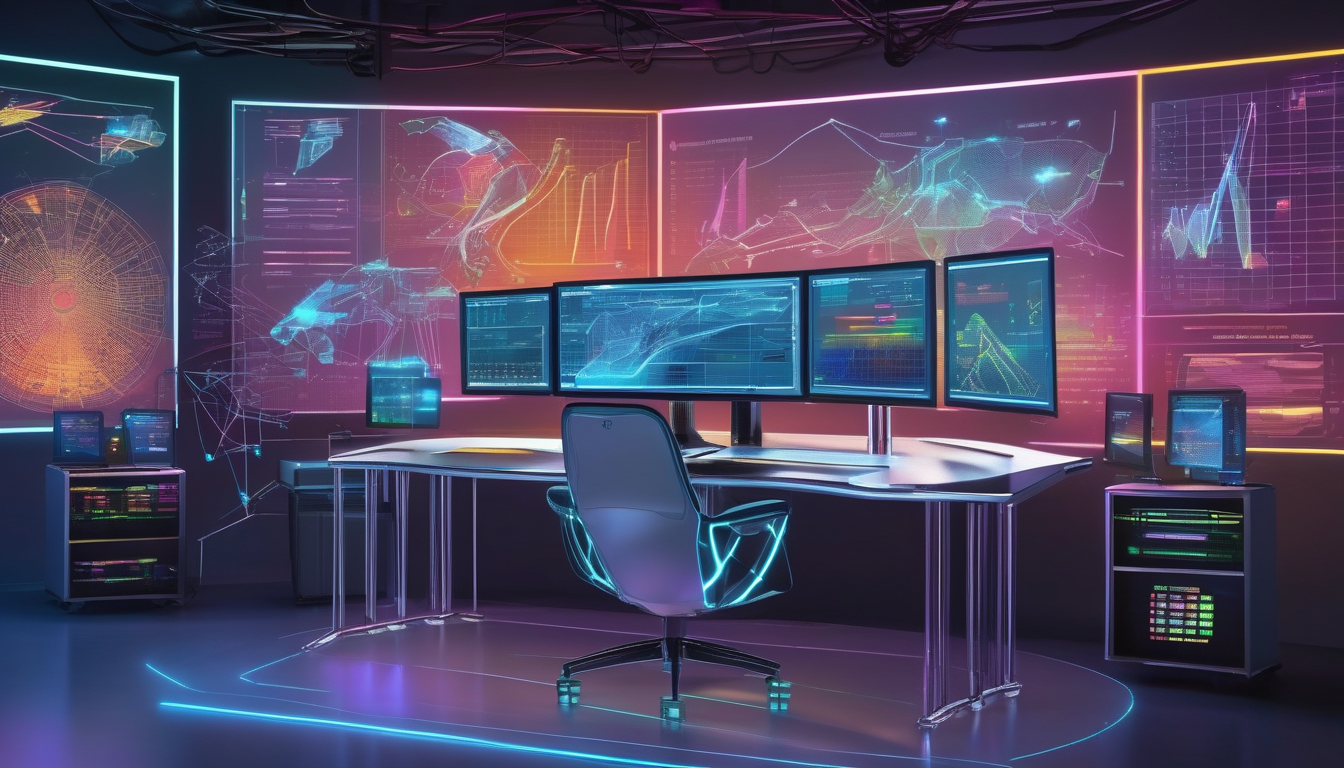
1. Advanced Machine Learning Algorithms
In the rapidly evolving world of technology, advanced machine learning algorithms are at the forefront of enhancing the capabilities of fast-learning robots. These algorithms are no longer just basic tools; they are becoming sophisticated systems that enable robots to analyze vast amounts of data and learn from it in real-time. Imagine a robot that can adapt to its environment as quickly as a human can learn a new skill. This transformation is not just a dream—it’s happening right now!
Machine learning algorithms empower robots to recognize patterns, make predictions, and improve their performance based on feedback. This means that as robots interact with their surroundings and gather more data, they become increasingly intelligent and efficient. For instance, in a manufacturing setting, a robot equipped with advanced algorithms can optimize its movements on the assembly line by learning from previous tasks, significantly reducing errors and increasing productivity.
To illustrate the impact of these algorithms, consider the following key areas where they make a difference:
- Real-time learning: Robots can adjust their actions based on immediate feedback, leading to quicker problem-solving.
- Data-driven decisions: By analyzing large datasets, robots can make informed decisions that enhance their operational efficiency.
- Adaptive behavior: These algorithms allow robots to change their behaviors based on new information, making them more versatile in various tasks.
Moreover, the integration of deep learning techniques has revolutionized how robots understand complex data inputs, such as images and sounds. For example, a robot that utilizes convolutional neural networks (CNNs) can identify objects and navigate through cluttered environments with remarkable accuracy. This capability is crucial in fields like autonomous driving and healthcare robotics, where precision is paramount.
As we look toward 2025, the potential applications of these advanced machine learning algorithms are staggering. Industries ranging from agriculture to healthcare are poised to benefit immensely. In agriculture, robots can analyze soil conditions and crop health, optimizing yield without human intervention. In healthcare, they can assist in patient monitoring and diagnostics, providing timely insights that can save lives.
In conclusion, the advancements in machine learning algorithms are not just enhancing the capabilities of robots; they are redefining what is possible in automation and artificial intelligence. As these technologies continue to evolve, we can expect to see robots that are not only faster learners but also more capable collaborators in our daily lives, making our future brighter and more efficient.
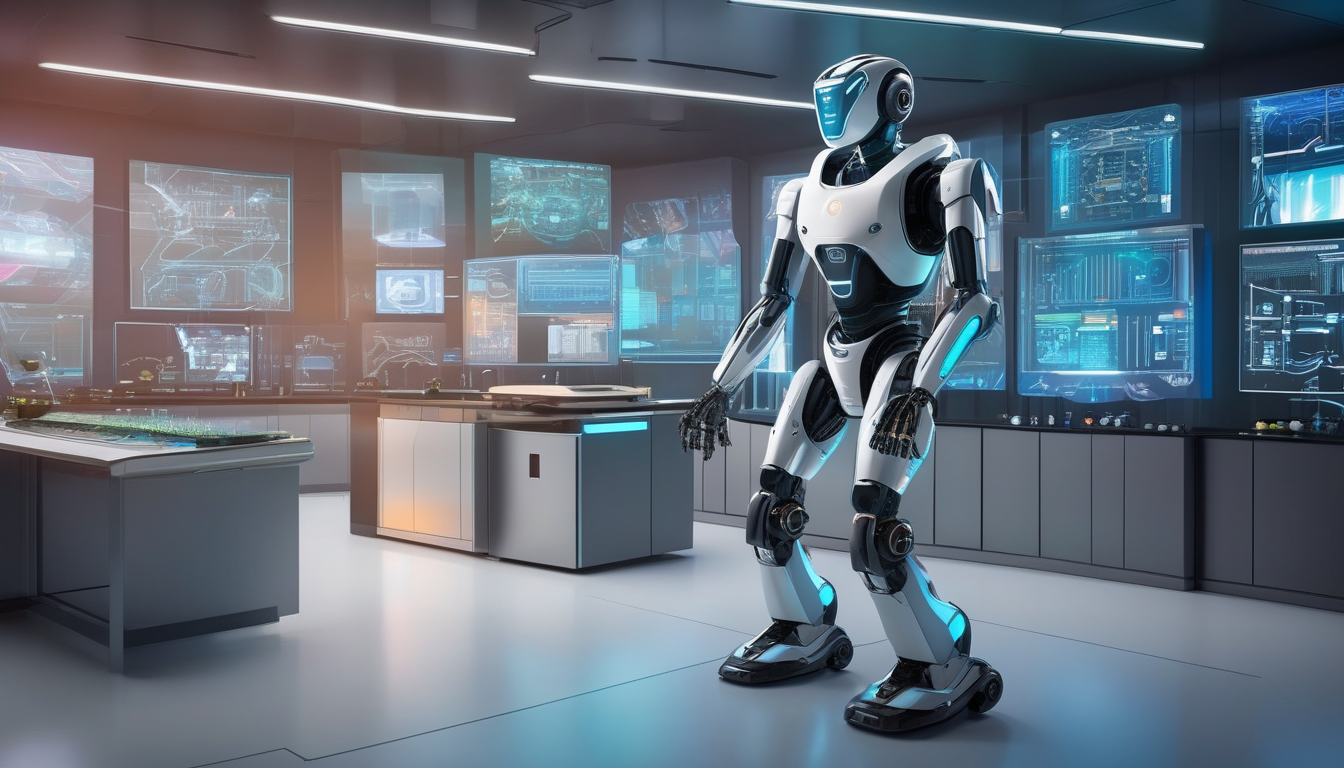
2. Enhanced Sensor Technologies
In the rapidly evolving world of robotics, enhanced sensor technologies are playing a pivotal role in transforming how robots interact with their environment. These advanced sensors are akin to giving robots a new pair of eyes and ears, enabling them to perceive their surroundings with unprecedented clarity. Imagine a robot that can not only see but also understand what it sees—this is the future we are heading towards by 2025.
With the integration of high-definition cameras, LiDAR systems, and ultrasonic sensors, robots are becoming more adept at interpreting complex data streams in real-time. These technologies allow robots to gather information about their surroundings, such as distance, shape, and even temperature. For instance, a robot equipped with LiDAR can create a detailed 3D map of its environment, making it easier to navigate through crowded spaces or avoid obstacles. This capability is essential in applications ranging from autonomous vehicles to warehouse automation.
Moreover, the evolution of sensor technologies is not just about better vision; it’s also about enhanced decision-making. With advanced algorithms processing sensor data, robots can make split-second decisions that are crucial for their operation. For example, in a manufacturing setting, a robot can detect anomalies in the production line and adjust its actions accordingly, thereby preventing costly errors. This level of responsiveness is what sets fast-learning robots apart from their predecessors.
The impact of enhanced sensor technologies extends beyond mere operational efficiency. They also facilitate better human-robot collaboration. As robots become more aware of their surroundings and can interpret human gestures and commands, the interaction between humans and machines becomes more intuitive. This is particularly important in sectors like healthcare, where robots assist medical professionals in surgeries or patient care. Imagine a surgical robot that can not only follow commands but also anticipate the doctor’s needs based on the surrounding context—this is the kind of synergy enhanced sensors are making possible.
In summary, the advancements in sensor technologies are not just incremental improvements; they represent a revolutionary leap in how robots learn and adapt to their environments. As we move towards 2025, we can expect these technologies to become more sophisticated, leading to robots that are not only faster learners but also more reliable partners in various industries. The future is bright for robots equipped with enhanced sensors, and the possibilities are truly exciting.
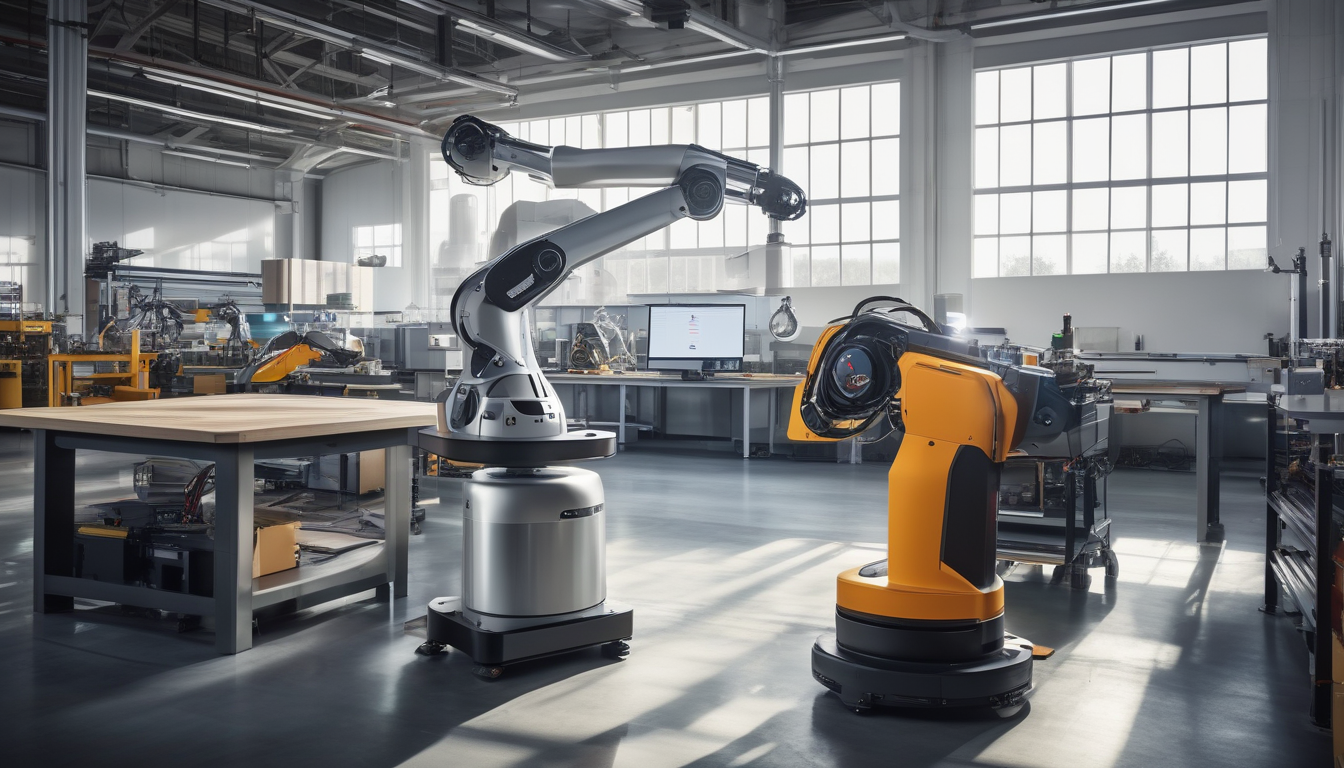
3. Collaborative Robotics
Collaborative robotics, often referred to as cobots, is transforming the landscape of automation by enabling robots to work alongside humans. Unlike traditional industrial robots that operate in isolation, cobots are designed to interact and collaborate with human workers in the same workspace. This synergy not only enhances productivity but also ensures a safer working environment. Imagine a factory floor where robots and humans seamlessly share tasks, each complementing the other’s strengths. Isn’t that a fascinating thought?
The rise of collaborative robotics is driven by several key factors. First and foremost, the advancements in machine learning and artificial intelligence have made it possible for these robots to learn from human interactions. This means that they can adapt their behavior based on real-time feedback, becoming more efficient and effective over time. For instance, a cobot in a manufacturing setup can observe how a human worker performs a task and adjust its own actions to better assist, creating a dynamic partnership.
Furthermore, the design of cobots is inherently user-friendly. They are often equipped with sensors and safety features that allow them to operate safely around humans without the need for safety cages. This not only facilitates easier integration into existing workflows but also fosters a more collaborative atmosphere. Workers can feel confident and safe knowing that the robots are designed to prioritize human safety.
The potential applications of collaborative robotics are vast and varied. Here are a few industries where cobots are making waves:
- Manufacturing: Cobots assist in assembly lines, taking on repetitive tasks while humans focus on more complex operations.
- Healthcare: In hospitals, cobots can support medical staff by handling logistics and patient monitoring.
- Agriculture: Cobots are being used for planting, harvesting, and monitoring crops, allowing farmers to maximize efficiency.
As we look toward the future, the integration of cobots is expected to grow exponentially. By 2025, we can anticipate a more significant presence of collaborative robots in various sectors, fundamentally changing how we approach work. The benefits are clear: increased efficiency, enhanced safety, and a more harmonious work environment. So, the next time you think about robots, remember that they might just be your new best coworkers, helping you tackle tasks with ease and precision.
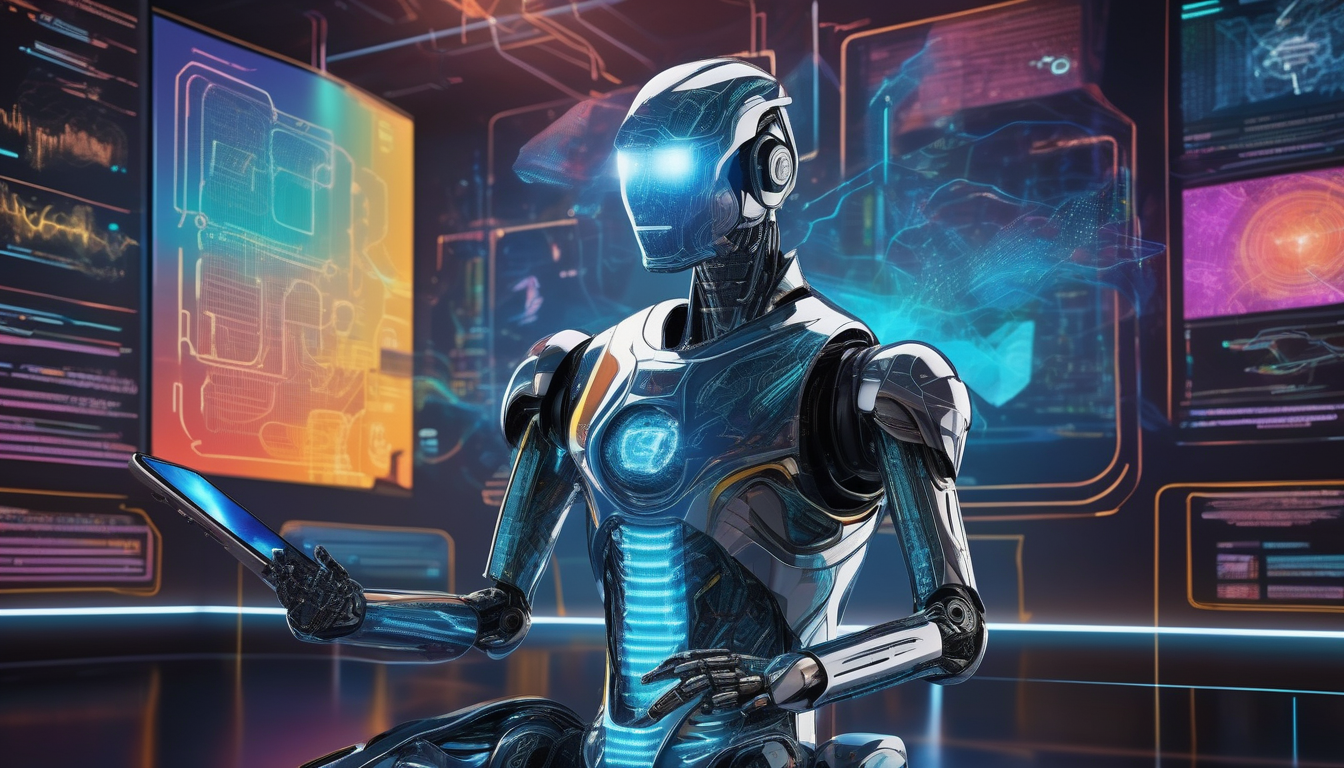
4. Natural Language Processing
Natural Language Processing (NLP) is like giving robots a voice and ears, allowing them to understand and interact with us in ways that feel natural. Imagine having a conversation with a robot that not only hears your words but also comprehends the context and emotions behind them. This technology is advancing rapidly, and by 2025, we can expect significant breakthroughs that will change how we communicate with machines.
At its core, NLP enables robots to process human language, making it a critical component in various applications. From customer service chatbots to sophisticated virtual assistants, the ability to interpret and respond to human speech is transforming industries. For instance, in healthcare, robots equipped with NLP can assist patients by providing information or answering questions, making the experience more user-friendly and efficient.
One of the most exciting aspects of NLP is its capability to learn from interactions. As robots engage with users, they gather data that helps them improve their responses over time. This continual learning process means that the more we interact with these robots, the smarter they become. It’s akin to teaching a child; the more they practice, the better they get.
Moreover, NLP can break down language barriers, allowing robots to communicate in multiple languages. This versatility is essential in our increasingly globalized world. Imagine a robot that can switch from English to Spanish or Mandarin seamlessly, making it a valuable tool in diverse settings—from international business to tourism.
To illustrate the potential of NLP, consider the following table showcasing its applications across different industries:
| Industry | Application |
|---|---|
| Healthcare | Patient interaction and information retrieval |
| Customer Service | Chatbots handling inquiries and complaints |
| Education | Language learning tools and tutoring systems |
| Finance | Automated report generation and analysis |
| Entertainment | Interactive storytelling and gaming experiences |
In summary, Natural Language Processing is set to revolutionize the way we interact with robots. By enabling machines to understand and respond to human language, we are paving the way for a future where communication with technology is as seamless as chatting with a friend. As we move towards 2025, the advancements in NLP will not only enhance user experience but also redefine our relationship with robots, making them more approachable and integrated into our daily lives.
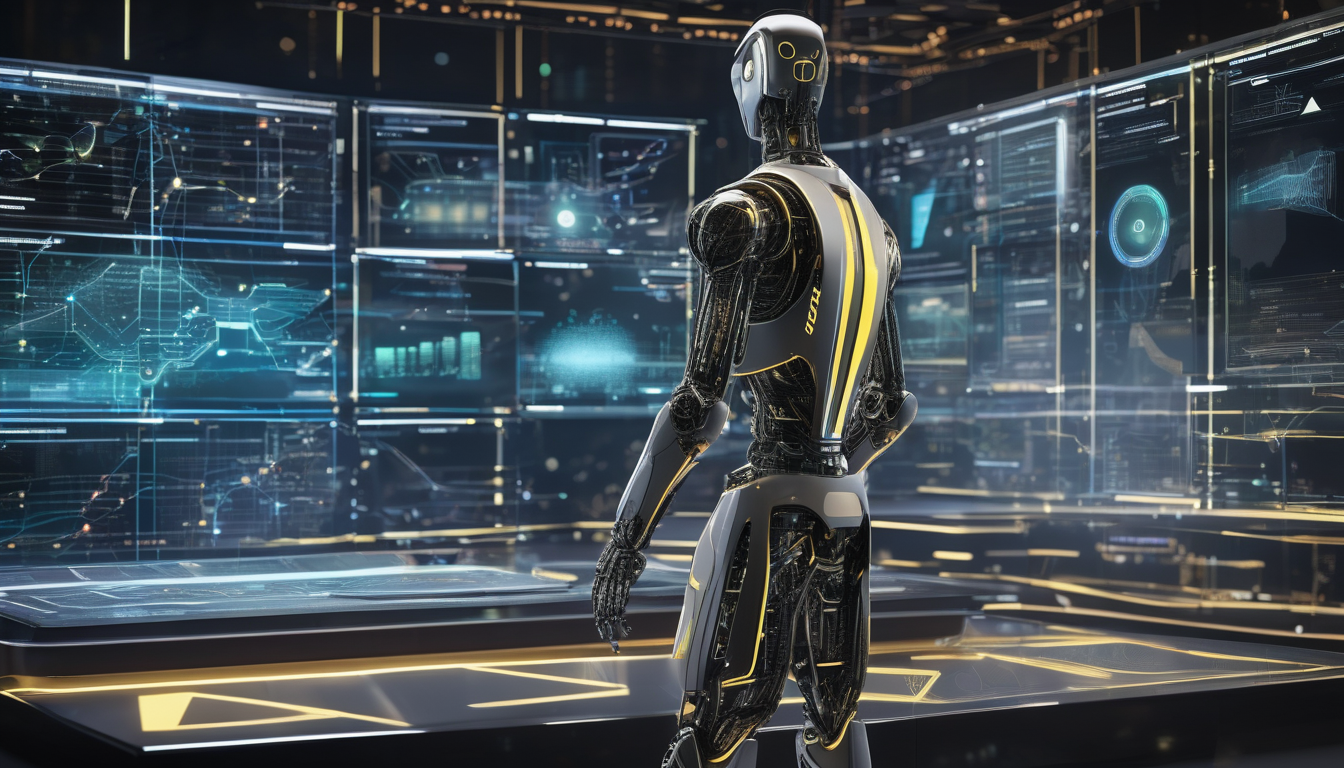
5. Edge Computing Integration
Imagine a world where robots can think and react in the blink of an eye. This is becoming a reality thanks to edge computing integration. By processing data locally, robots can make decisions faster and more efficiently, which is crucial in dynamic environments. Think of it like having a personal assistant who doesn’t need to check with a central office for every little decision—they just know what to do!
In traditional cloud computing, data is sent to a centralized server for processing, which can introduce delays. With edge computing, the data processing happens right where the action is. This means that robots can analyze their surroundings and respond to changes almost instantaneously. For example, consider a robot working in a busy warehouse. If it encounters an obstacle, it needs to react immediately to avoid a collision. Edge computing allows it to process that information on the spot, rather than waiting for a response from a distant server.
Furthermore, edge computing can significantly reduce the amount of data that needs to be sent over the network. This not only speeds up response times but also decreases bandwidth costs. In a world where data is generated at an unprecedented rate, this efficiency is vital. Here’s a quick breakdown of the benefits of integrating edge computing into robotics:
- Reduced Latency: Immediate processing leads to faster reactions.
- Increased Reliability: Local processing means that robots can still function even if the internet connection is unstable.
- Enhanced Security: By processing data locally, sensitive information can be kept closer to the source, reducing the risk of breaches.
As we move towards 2025, the implications of edge computing in robotics are enormous. From autonomous vehicles navigating busy streets to drones delivering packages, the ability to process data on-site will revolutionize how robots operate. Companies are already investing heavily in this technology, recognizing that the future of robotics lies in their ability to think independently and act swiftly.
In conclusion, edge computing integration is not just a technological upgrade; it’s a game-changer for fast-learning robots. By enabling real-time data processing, robots can become more autonomous, efficient, and capable of handling complex tasks. As we look ahead, the potential applications are limitless, and the impact on various industries—from manufacturing to healthcare—will be profound. Are you ready to embrace this new era of robotics?
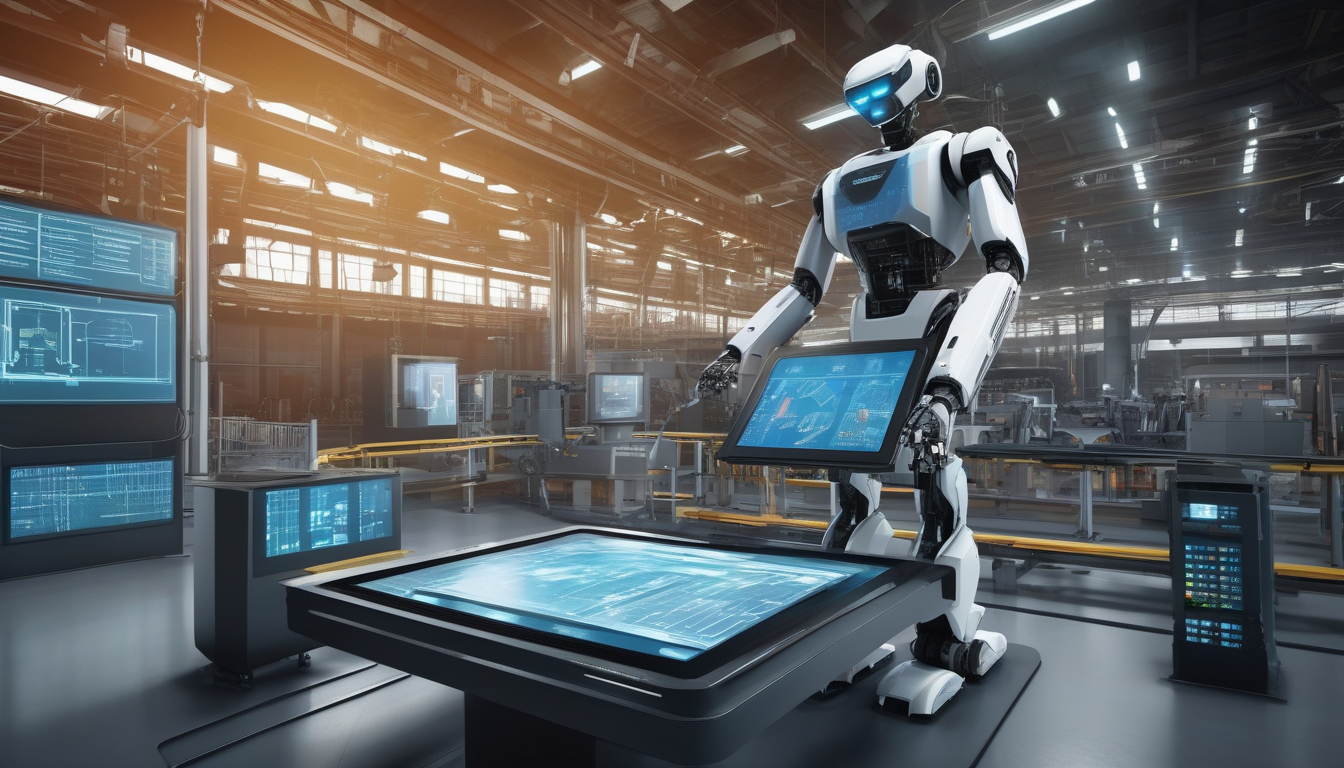
6. AI-driven Predictive Maintenance
Imagine a world where machines can predict their own breakdowns before they even happen. AI-driven predictive maintenance is making this vision a reality. By leveraging advanced algorithms and vast amounts of data, robots can now monitor their own health and performance in real-time. This technology not only enhances operational efficiency but also significantly reduces downtime, which can be a game-changer for industries reliant on machinery.
At the heart of this innovation is the ability of robots to analyze patterns and detect anomalies. For instance, sensors embedded within a robot can continuously collect data on various parameters such as temperature, vibration, and noise levels. When the data is processed using machine learning models, the system can identify trends that indicate potential failures. This proactive approach allows businesses to schedule maintenance activities at the most convenient times, thus minimizing disruptions.
Here are some key benefits of AI-driven predictive maintenance:
- Cost Savings: By anticipating failures, companies can avoid costly repairs and replacements that arise from unexpected breakdowns.
- Increased Lifespan: Regular maintenance based on predictive analytics can extend the lifespan of equipment, ensuring that investments last longer.
- Enhanced Safety: Predictive maintenance helps in identifying issues that could pose safety risks, thus protecting workers and reducing liability for companies.
Moreover, industries such as manufacturing, transportation, and energy are already reaping the rewards of this technology. For example, in manufacturing, robots equipped with predictive maintenance capabilities can alert operators about the need for maintenance before a critical failure occurs. This not only keeps production lines running smoothly but also allows for better resource allocation.
In conclusion, as we move towards 2025, the integration of AI-driven predictive maintenance will become increasingly vital. Companies that embrace this technology will not only enhance their operational efficiency but also gain a competitive edge in an ever-evolving market. The future of robotics is bright, and predictive maintenance is a shining example of how we can harness the power of AI to transform industries.
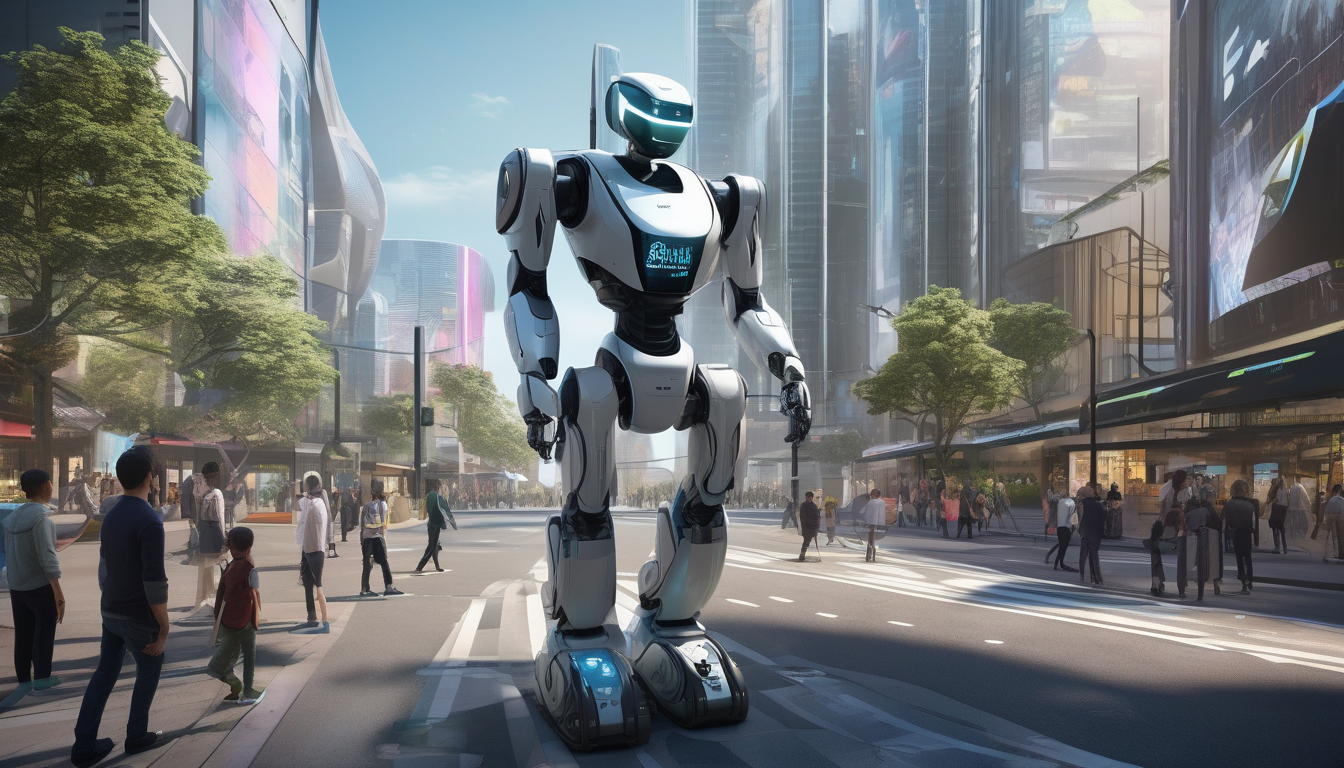
7. Autonomous Navigation Systems
Imagine a world where robots can navigate complex environments just as easily as you can walk through your home. Autonomous navigation systems are at the forefront of this technological revolution, enabling robots to traverse intricate spaces safely and efficiently. These systems utilize advanced mapping and localization techniques, allowing robots to understand their surroundings with remarkable precision.
At the core of autonomous navigation is the ability to process vast amounts of data from various sensors. Robots equipped with LIDAR, cameras, and ultrasonic sensors can create detailed maps of their environment. This data not only helps them avoid obstacles but also allows them to plan optimal routes. Think of it like a GPS for robots, but with the added capability of adapting to real-time changes in their surroundings.
One of the most exciting aspects of autonomous navigation systems is their application across various industries. From warehouse automation to self-driving vehicles, the potential is limitless. For instance, in warehouses, robots can efficiently navigate through aisles, picking and delivering items without human intervention. This not only speeds up operations but also reduces the risk of accidents, making workplaces safer.
Moreover, these systems are becoming increasingly sophisticated. With the integration of artificial intelligence, robots can learn from their experiences. They can analyze past navigation attempts, identify patterns, and improve their decision-making processes over time. This is akin to how we learn from our mistakes; the more we practice, the better we get!
However, the development of autonomous navigation systems does come with challenges. Ensuring safety is paramount, especially in environments shared with humans. Engineers are working tirelessly to refine these systems, implementing features like collision avoidance and dynamic path planning. These features allow robots to react swiftly to unexpected obstacles, ensuring smooth and safe navigation.
In conclusion, autonomous navigation systems represent a significant leap forward in robotics technology. Their ability to navigate complex environments safely and efficiently opens doors to countless applications, transforming industries and enhancing everyday life. As we move closer to 2025, the advancements in this field will undoubtedly surprise us, paving the way for a future where robots seamlessly integrate into our world.
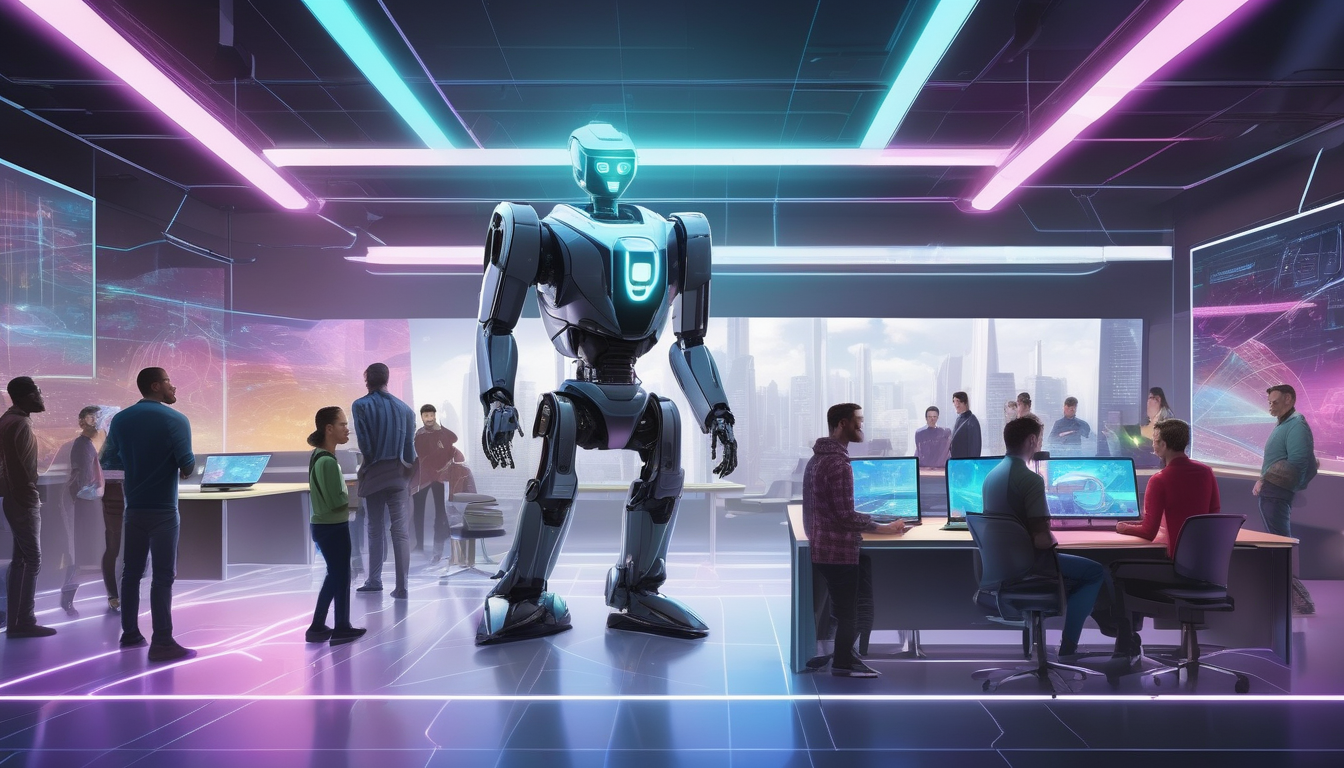
8. Human-Robot Interaction Interfaces
In the rapidly evolving world of robotics, human-robot interaction interfaces are becoming increasingly vital. These interfaces serve as the bridge between humans and robots, allowing for seamless communication and collaboration. Imagine a world where you can simply talk to a robot, and it understands you perfectly, responding in real-time to your commands. Sounds futuristic, right? But this is the reality we are heading towards!
One of the most exciting aspects of these interfaces is their ability to enhance user experience. By incorporating advanced technologies such as natural language processing and gesture recognition, robots can now interpret human emotions and intentions more accurately. This means that instead of just following commands, robots can engage in meaningful conversations, making them feel more like companions than mere machines.
Furthermore, the design of these interfaces is crucial. A well-designed interface can significantly improve interaction quality. For instance, consider the following features that make these interfaces more effective:
- Intuitive Controls: Users should find it easy to navigate and control robots without extensive training.
- Feedback Mechanisms: Robots should provide real-time feedback, confirming actions and showing understanding.
- Multimodal Interaction: Combining voice, touch, and visual cues allows for a richer interaction experience.
Moreover, the implementation of virtual and augmented reality into these interfaces opens up a whole new realm of possibilities. Imagine training a robot using a VR environment where you can simulate various scenarios, allowing the robot to learn and adapt without any real-world consequences. This not only enhances the robot’s learning curve but also increases safety for users during training sessions.
As we look ahead, the impact of improved human-robot interaction interfaces will be felt across various sectors. In healthcare, for example, robots equipped with advanced interfaces can assist medical professionals by providing real-time data and support during surgeries. In home automation, personal assistants can learn individual preferences, making daily tasks easier and more enjoyable. The possibilities are endless!
In summary, the future of human-robot interaction interfaces is bright and full of potential. As these technologies continue to evolve, they will undoubtedly reshape how we interact with machines, making our lives more efficient and enjoyable. So, are you ready to embrace this exciting future where robots are not just tools but partners in our daily lives?
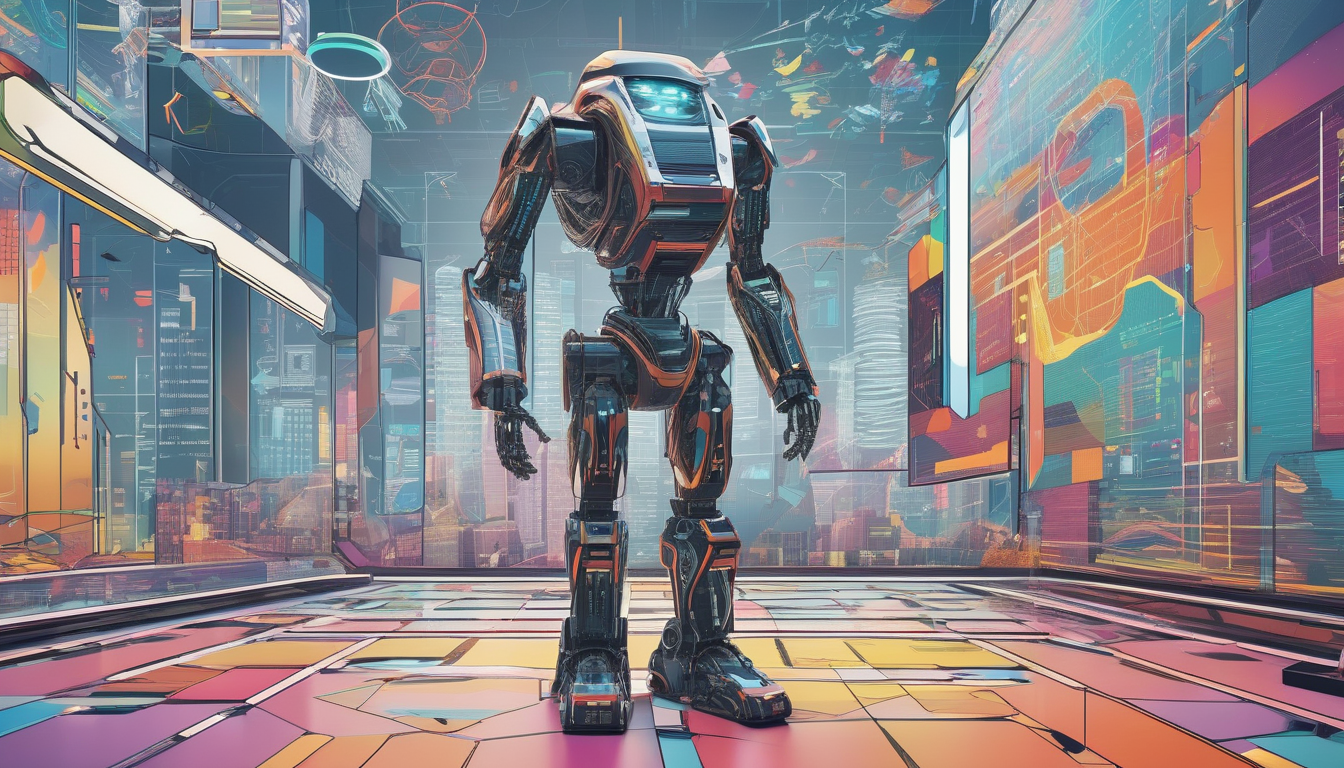
9. Reinforcement Learning Techniques
Reinforcement learning techniques are truly revolutionizing the way robots learn and adapt to their environments. Imagine training a puppy; it learns through a series of rewards and consequences, right? Well, that’s essentially how reinforcement learning works for robots. By interacting with their surroundings and receiving feedback, they can optimize their actions to achieve specific goals. This dynamic learning process allows robots to improve their performance over time, making them more efficient and capable of handling complex tasks.
At its core, reinforcement learning involves an agent (the robot) that makes decisions in an environment to maximize a reward. The agent explores various actions, learns from the outcomes, and refines its strategies based on this experience. This trial-and-error approach not only enhances the robot’s ability to perform tasks but also allows it to adapt to unexpected situations. For instance, a delivery robot might initially struggle with navigating a crowded sidewalk, but through reinforcement learning, it can learn to avoid obstacles more effectively.
One of the fascinating aspects of reinforcement learning is its application in various fields. Here are a few areas where these techniques are making a significant impact:
- Autonomous Vehicles: Robots can learn to navigate complex traffic scenarios by continuously adjusting their driving strategies based on real-time feedback.
- Robotic Surgery: Surgeons can train robots to perform delicate procedures more precisely by using reinforcement learning to refine their movements.
- Game Playing: Robots can master games like chess or Go by learning optimal strategies through countless iterations of play.
Moreover, the integration of reinforcement learning with other technologies, such as deep learning, is further enhancing the capabilities of robots. By combining these approaches, robots can process vast amounts of data and make more informed decisions. This synergy is crucial in applications where rapid adaptation is necessary, such as in emergency response scenarios where conditions can change dramatically.
As we look towards the future, the potential for reinforcement learning techniques in robotics seems limitless. The ability for robots to learn from their environment and improve autonomously not only paves the way for more intelligent machines but also raises fascinating questions about the future of human-robot collaboration. Will we see robots that can think on their feet, making decisions that rival human intuition? With the advancements in reinforcement learning, we might just be on the brink of a new era in robotics.

10. Swarm Robotics
Swarm robotics is a fascinating field that mimics the collective behavior of social organisms, such as ants, bees, or even flocks of birds. Imagine a group of tiny robots working together seamlessly, just like a well-orchestrated dance. This technology is not just a futuristic concept; it’s rapidly becoming a reality with the potential to revolutionize various industries.
One of the most exciting aspects of swarm robotics is its ability to tackle complex tasks through collaboration. Rather than relying on a single robot to perform a job, multiple robots can work together, sharing information and resources. This approach enhances efficiency and resilience, making it suitable for applications ranging from agriculture to disaster response. For instance, in agriculture, swarms of drones can monitor crop health, identify pests, and even pollinate flowers, all while communicating and coordinating with each other.
The key to successful swarm robotics lies in the design of algorithms that allow these robots to operate autonomously yet cohesively. They rely on simple rules and local interactions, which lead to complex behaviors. This is akin to how individual ants follow pheromone trails to find food, contributing to the colony’s success. By implementing such principles, researchers are developing robots that can adapt to changing environments and unexpected challenges.
Moreover, the benefits of swarm robotics extend beyond efficiency. They can significantly reduce the risk to human life in hazardous situations. For example, in disaster scenarios, a swarm of robots can be deployed to search for survivors in rubble or assess damage in dangerous areas, all while minimizing the need for human intervention. This capability not only saves lives but also accelerates the recovery process.
As we look toward 2025, the advancements in swarm robotics are expected to soar. With improved communication technologies, enhanced sensors, and better algorithms, these robots will become more capable and reliable. The potential applications are vast, and industries are beginning to recognize the advantages of adopting swarm robotics solutions.
In conclusion, swarm robotics is paving the way for innovative solutions to some of the world’s most pressing challenges. By harnessing the power of collective behavior, we can create systems that are not only efficient but also adaptable and resilient. The future of swarm robotics is bright, and it’s an exciting time to be involved in this transformative technology.
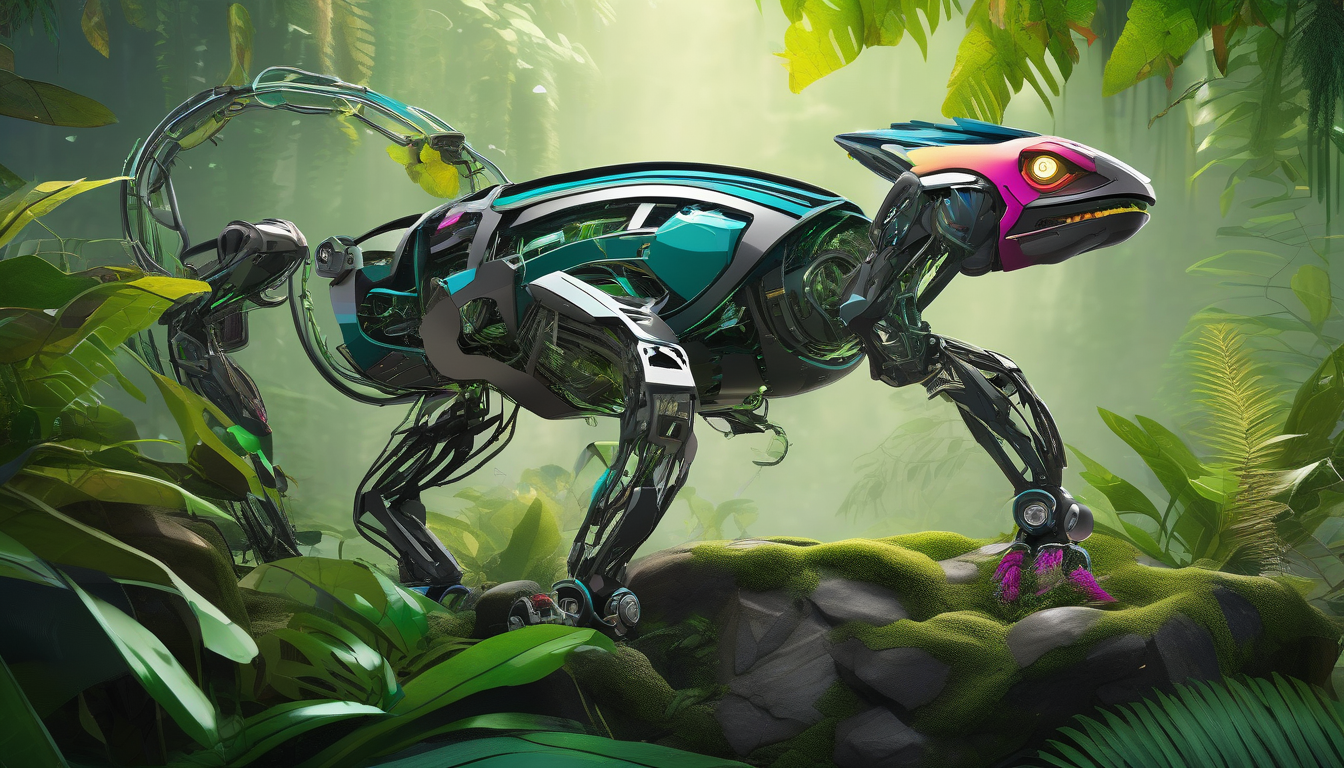
11. Bio-inspired Robotics
Bio-inspired robotics is a fascinating field that draws inspiration from the natural world to create robots capable of remarkable agility and adaptability. Imagine a robot that mimics the way a cheetah runs or how a bird soars through the sky. This approach not only enhances the robots’ ability to navigate challenging environments but also optimizes their performance in various tasks. By studying the mechanics of movement in animals, engineers can design robots that are not only efficient but also capable of handling complex tasks that traditional robots might struggle with.
One of the most exciting aspects of bio-inspired robotics is its potential applications across multiple industries. For instance, in agriculture, robots that mimic the foraging behaviors of certain insects can efficiently pollinate crops or identify pests. In search and rescue operations, robots designed to move like snakes can navigate through debris to reach trapped individuals. The versatility of these designs makes bio-inspired robotics a game changer in how we approach problem-solving in robotics.
Moreover, the integration of bio-inspired designs often leads to improvements in energy efficiency. Just as animals have evolved to use energy efficiently in their movements, robots can be engineered to minimize power consumption while maximizing output. This is particularly important in a world that increasingly values sustainability and energy conservation.
To illustrate the impact of bio-inspired robotics, consider the following table showcasing some notable examples and their applications:
| Robot Type | Inspiration | Application |
|---|---|---|
| RoboBee | Bees | Pollination |
| Snakebot | Snakes | Search and rescue |
| RoboFish | Fish | Underwater exploration |
| Soft Robot | Octopus | Flexible manipulation |
As we look towards the future, bio-inspired robotics is poised to revolutionize how we interact with technology. The blend of biology and robotics not only paves the way for smarter machines but also encourages a deeper understanding of the natural world. By harnessing the principles of evolution and adaptation, we can create robots that are not just tools, but collaborators in our quest to solve some of the most pressing challenges faced by society today. In this exciting journey, the lessons learned from nature will continue to inspire innovation and creativity in the realm of robotics.
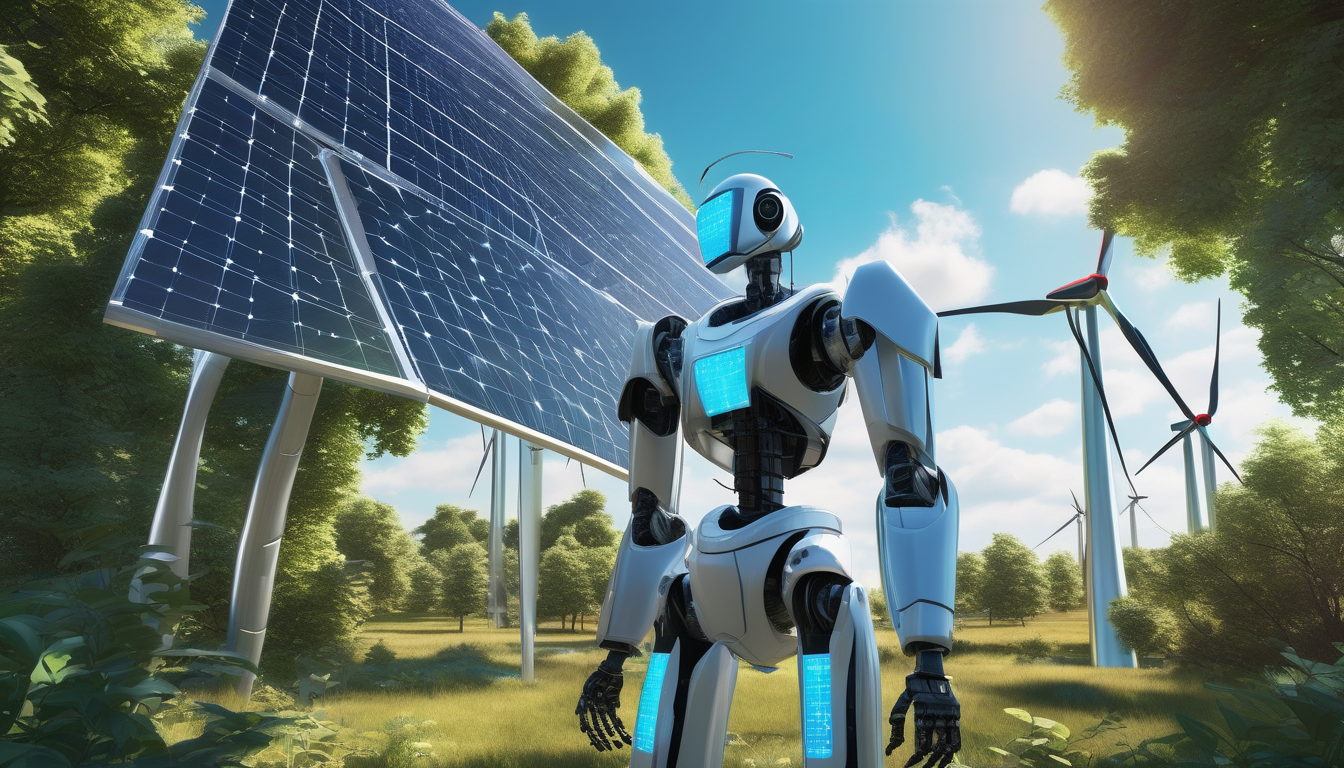
12. Energy-efficient Robotics
In a world increasingly concerned about sustainability, energy-efficient robotics is emerging as a game-changer. These robots are designed to optimize energy consumption, ensuring they can operate longer while minimizing their environmental footprint. Imagine a fleet of delivery drones that can travel farther without needing constant recharging, or manufacturing robots that consume less power while maintaining peak performance. The advancements in energy-efficient technologies are not just beneficial; they are essential for the future of robotics.
One of the key areas of focus in energy-efficient robotics is the development of advanced power management systems. These systems intelligently regulate energy use, allowing robots to conserve energy during idle times and utilize it more effectively during active tasks. This is akin to how a hybrid car switches between electric and gasoline power, optimizing fuel usage based on driving conditions. By employing similar strategies, robots can significantly reduce their energy consumption.
Another exciting aspect of energy-efficient robotics is the integration of renewable energy sources. Solar panels, for instance, can be incorporated into robotic systems, allowing them to harness solar energy for operation. This not only reduces reliance on traditional energy sources but also contributes to a more sustainable energy ecosystem. As these technologies advance, we may soon see robots that can operate independently, powered entirely by renewable energy.
Moreover, the materials used in constructing these robots are evolving as well. Lightweight and durable materials are being developed to enhance energy efficiency. For example, using composite materials can reduce the overall weight of a robot, allowing it to move more swiftly and consume less power. This shift in material science is crucial, as it directly impacts how robots perform and their energy requirements.
To illustrate the impact of energy-efficient robotics, consider the following table that compares traditional robotic systems with their energy-efficient counterparts:
| Feature | Traditional Robotics | Energy-efficient Robotics |
|---|---|---|
| Energy Consumption | High | Low |
| Operating Time | Limited | Extended |
| Environmental Impact | Significant | Minimal |
| Cost of Operation | Higher | Lower |
In conclusion, the push for energy-efficient robotics is not just a trend; it is a necessity for our future. As we strive for a more sustainable world, these robots will play a critical role in various industries, from manufacturing to logistics, and even in everyday tasks. By embracing energy-efficient technologies, we can ensure that our robotic companions are not only smart but also environmentally responsible.
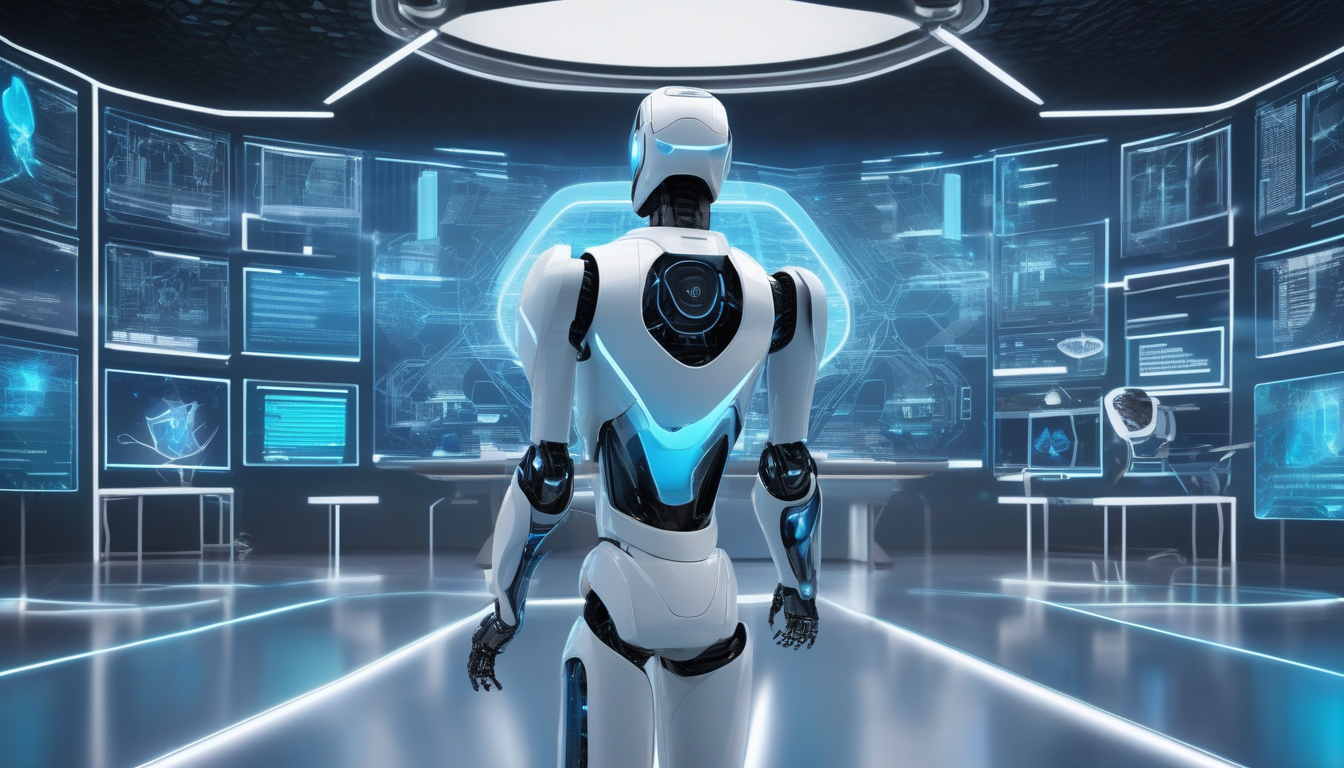
13. Cloud Robotics
Imagine a world where robots can share knowledge and learn from one another, just like humans do in a collaborative environment. This is the essence of cloud robotics, a groundbreaking technology that leverages the power of cloud computing to enhance the capabilities of robotic systems. By tapping into vast resources available in the cloud, robots can access and process information at unprecedented speeds, making them smarter and more efficient.
Cloud robotics operates on the principle that by connecting multiple robots to a centralized network, they can share data and insights, leading to improved learning and performance. This interconnectedness allows robots to access a wealth of information that would be impossible to store locally, particularly for those operating in dynamic environments. For instance, a delivery robot can learn from the experiences of others, adapting its routes based on real-time traffic data and environmental conditions.
One of the most significant advantages of cloud robotics is its ability to facilitate collaborative learning. Robots can continuously update their knowledge base, which means they become more adept at handling complex tasks over time. This is particularly beneficial in industries such as manufacturing, healthcare, and agriculture, where robots can learn from shared experiences and improve their operational efficiency. Here are some key benefits of cloud robotics:
- Scalability: As businesses grow, their robotic needs can change. Cloud robotics allows for easy scaling of robotic systems without the need for extensive hardware upgrades.
- Cost Efficiency: By utilizing cloud resources, companies can reduce the costs associated with maintaining extensive local computing infrastructures.
- Real-time Updates: Robots can receive software updates and new algorithms instantly, ensuring they are always equipped with the latest advancements.
However, the rise of cloud robotics also brings challenges, particularly concerning data security and privacy. As robots become more integrated into our daily lives, the need for robust security measures to protect sensitive information is paramount. Developers must ensure that data transmitted between robots and the cloud is encrypted and secure, preventing unauthorized access and potential misuse.
In conclusion, cloud robotics is set to revolutionize the way robots operate by creating a more connected and intelligent ecosystem. As we move toward 2025, the advancements in this technology will not only enhance the capabilities of robots but also pave the way for new applications that we have yet to imagine. The future is bright, and with cloud robotics, we are just scratching the surface of what these fast-learning machines can achieve.
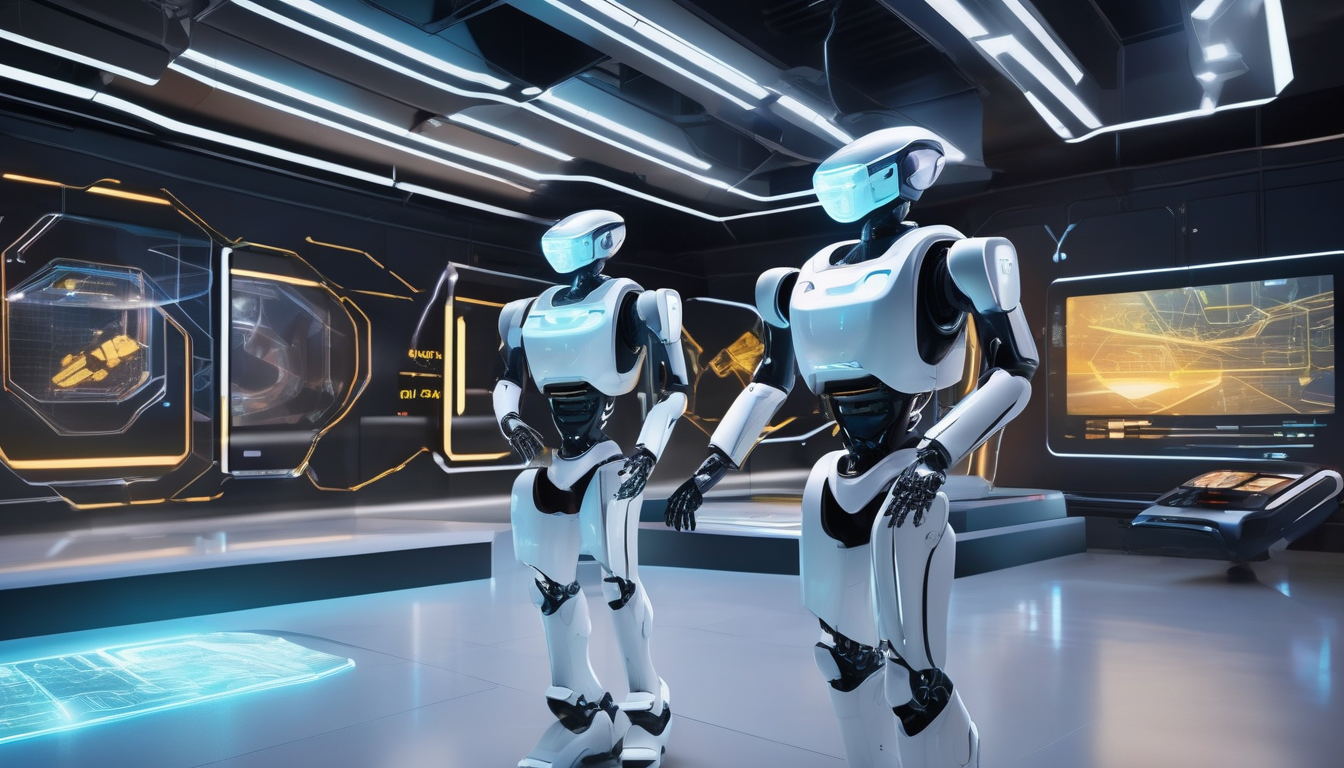
14. Virtual and Augmented Reality Integration
The integration of Virtual Reality (VR) and Augmented Reality (AR) into the realm of robotics is nothing short of revolutionary. Imagine a world where robots can not only perform tasks but also learn and adapt through immersive experiences. This technology is paving the way for robots to train in simulated environments that closely mimic real-world scenarios. Just like a pilot uses a flight simulator to hone their skills, robots can now practice complex maneuvers without the risks associated with real-life trials.
By utilizing VR and AR, robots can experience a 3D digital landscape where they can interact with their surroundings and learn from their mistakes. This is particularly beneficial in fields such as manufacturing, healthcare, and emergency response. For instance, in a manufacturing setting, a robot can be trained to assemble components by visualizing the process through AR glasses, which overlay instructions directly onto the physical parts. This not only enhances the robot’s learning curve but also reduces the time required for training.
Additionally, the use of VR and AR allows for real-time feedback. As robots engage with their virtual environments, they can receive instant corrections and suggestions, much like a coach guiding an athlete. This feedback loop accelerates the learning process and ensures that robots are not just programmed but are continually evolving in their capabilities.
Moreover, the potential for collaboration between humans and robots is significantly enhanced through these technologies. With AR, a human operator can see what the robot sees, allowing for better communication and teamwork. This is especially crucial in scenarios where precision is paramount, such as in surgical procedures or delicate assembly tasks. The synergy created by combining human intuition with robotic efficiency can lead to unprecedented outcomes.
To illustrate the impact of VR and AR integration in robotics, consider the following table showcasing potential applications:
| Industry | Application | Benefits |
|---|---|---|
| Manufacturing | Assembly Line Training | Reduced training time, improved accuracy |
| Healthcare | Surgical Assistance | Enhanced precision, safer procedures |
| Emergency Services | Disaster Response Training | Realistic simulations, better preparedness |
As we move towards 2025, the fusion of robotics with VR and AR technologies will undoubtedly transform how we perceive and interact with machines. The future is not just about robots performing tasks; it’s about creating intelligent systems that learn, adapt, and collaborate with humans in ways we have yet to fully realize. Are you ready to embrace this technological revolution?
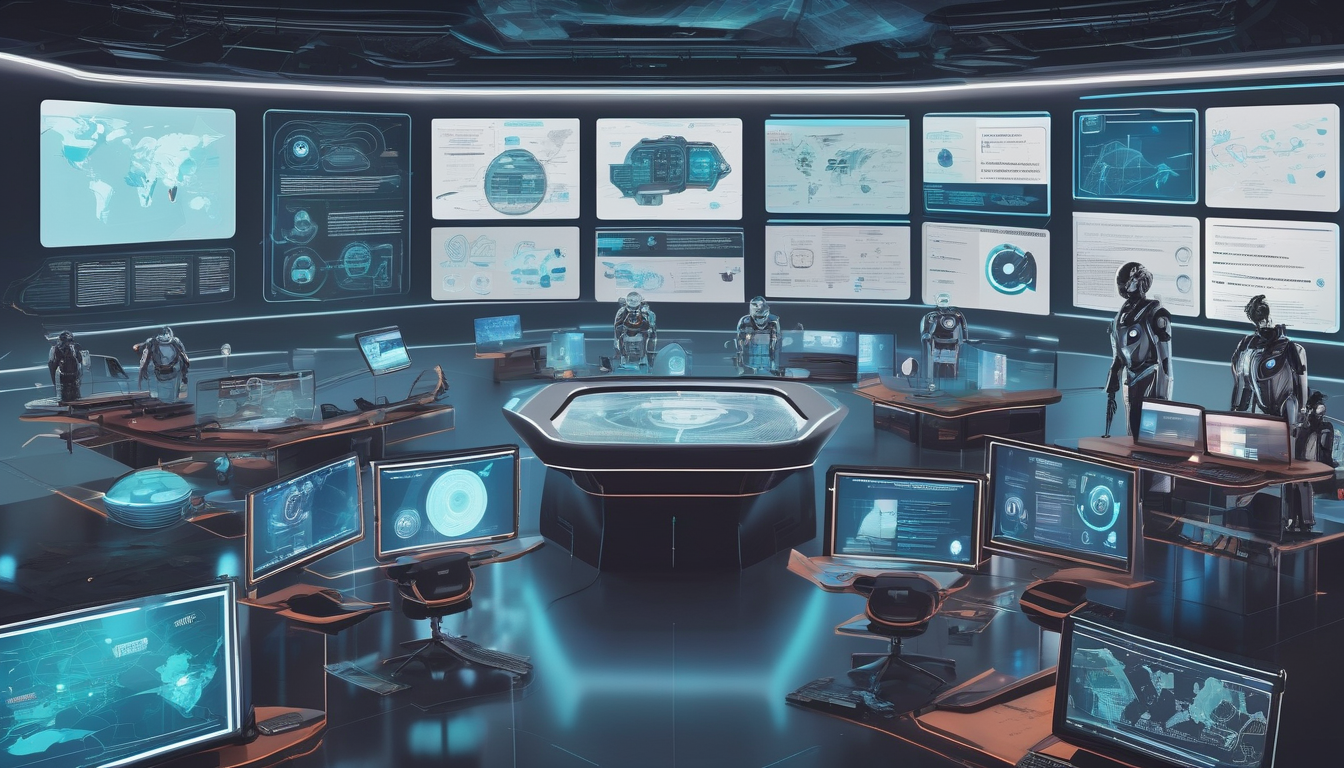
15. Ethical AI Frameworks
The rapid advancement of fast-learning robots has raised significant ethical concerns that cannot be ignored. As these machines become more integrated into our daily lives, the need for ethical AI frameworks is paramount. These frameworks are designed to ensure that robots operate within safe, responsible, and ethical guidelines, addressing critical issues related to privacy, security, and societal impact.
Imagine a world where robots assist in healthcare, education, and even law enforcement. While the potential benefits are enormous, the risks associated with misuse or malfunction are equally daunting. Ethical AI frameworks serve as a compass, guiding developers and users alike toward responsible practices. They encompass various principles, including:
- Transparency: Robots should be designed to operate transparently, allowing users to understand how decisions are made.
- Accountability: There must be clear lines of responsibility for the actions of robots, ensuring that developers and operators are accountable for any consequences.
- Fairness: AI systems should be free from bias, promoting equitable treatment for all individuals, regardless of background.
- Privacy: Protecting user data is crucial, and ethical frameworks should enforce strict guidelines on data collection and usage.
To illustrate the importance of these frameworks, consider the potential consequences of a robot making a biased decision in a hiring process. Without ethical guidelines, such a scenario could perpetuate existing inequalities and lead to widespread societal harm. Thus, establishing a robust ethical AI framework is not just beneficial; it is essential for the sustainable development of robotic technologies.
Moreover, as we look toward the future, the implementation of ethical AI frameworks will likely evolve alongside technological advancements. This means that developers must remain vigilant and adaptable, continuously updating these guidelines to reflect new challenges and insights. By fostering an environment of ethical responsibility, we can harness the power of fast-learning robots while minimizing risks and maximizing benefits.
In summary, ethical AI frameworks are crucial in shaping the future of fast-learning robots. They ensure that as these machines become more capable and autonomous, they do so in a manner that respects human values and societal norms. The conversation surrounding ethical AI is ongoing, and it is vital for all stakeholders—developers, policymakers, and users—to engage actively in this dialogue to create a future where technology serves humanity responsibly.
Frequently Asked Questions
- What are fast-learning robots?
Fast-learning robots are advanced machines equipped with technologies that allow them to learn and adapt quickly from their environments. They utilize sophisticated algorithms and sensors to enhance their performance in real-time, making them more intelligent and efficient in various applications.
- How do advanced machine learning algorithms improve robot performance?
These algorithms enable robots to analyze vast datasets, identifying patterns and making decisions based on learned experiences. This leads to improved adaptability, allowing robots to evolve their behaviors and respond to new challenges more effectively.
- What role do collaborative robots (cobots) play in workplaces?
Collaborative robots are designed to work alongside humans, boosting productivity and safety. They learn from human interactions, which helps them enhance their capabilities and integrate seamlessly into various work environments.
- How does natural language processing benefit human-robot interaction?
Natural language processing allows robots to understand and respond to human language intuitively. This enhances communication, making interactions with robots more user-friendly and effective, whether in customer service or personal assistance.
- What is the significance of edge computing in robotics?
Edge computing enables robots to process data locally, which reduces latency and allows for faster decision-making. This is especially important in dynamic environments where quick responses are crucial for safety and efficiency.
- How does AI-driven predictive maintenance work?
This technology helps robots anticipate potential failures by analyzing data trends and scheduling maintenance proactively. As a result, it increases operational efficiency and minimizes downtime in industrial settings.
- What are autonomous navigation systems?
Autonomous navigation systems help robots safely and efficiently navigate complex environments. They use advanced mapping and localization techniques, ensuring robots can move around obstacles and perform tasks effectively.
- What is swarm robotics?
Swarm robotics involves multiple robots working together to complete complex tasks. By leveraging collective behavior, these robots can enhance efficiency and resilience in a variety of applications, from agriculture to disaster response.
- Why is energy efficiency important in robotics?
Energy-efficient robotics focuses on reducing power consumption, which extends operational time and minimizes environmental impact. This is essential for sustainable development and helps in creating robots that are both effective and eco-friendly.
- What are ethical AI frameworks?
Ethical AI frameworks ensure that fast-learning robots operate within safe and responsible guidelines. They address concerns related to privacy, security, and the societal impact of robotics, promoting trust and accountability in technology.

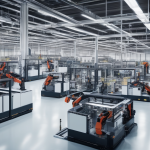

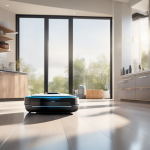
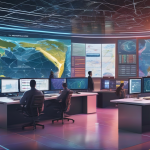









The AI regulation and compliance section is spot on. With the rise of AI adoption, ethical considerations will be crucial.…